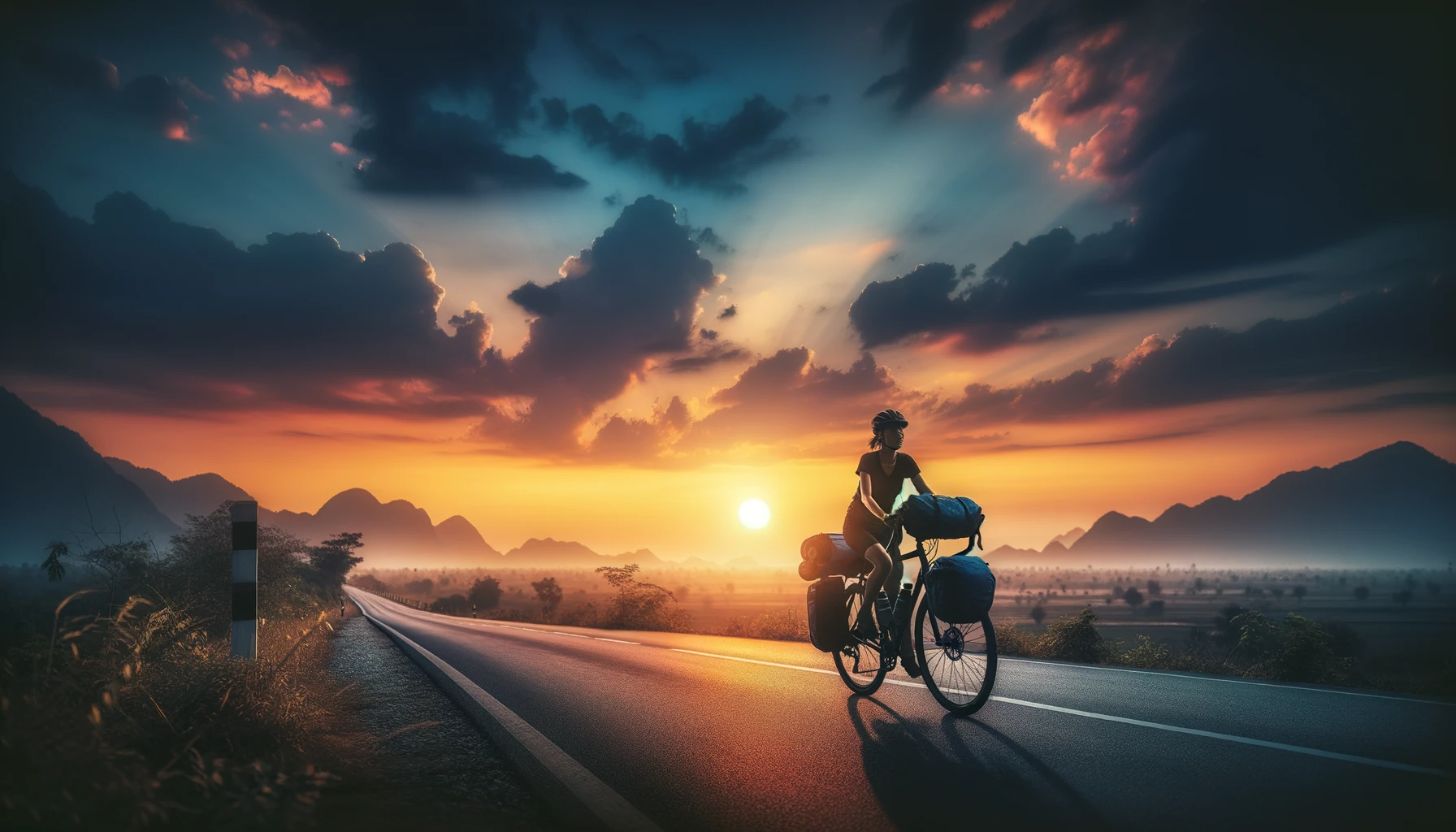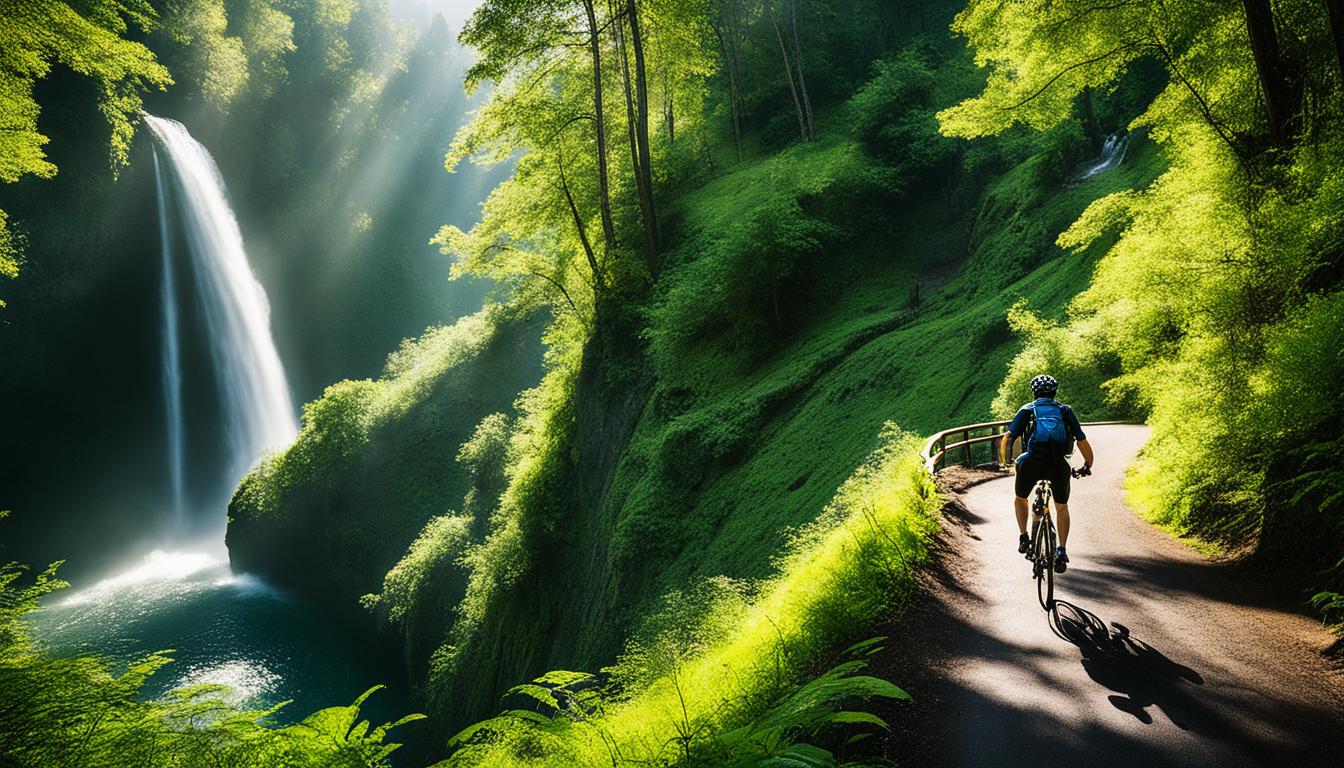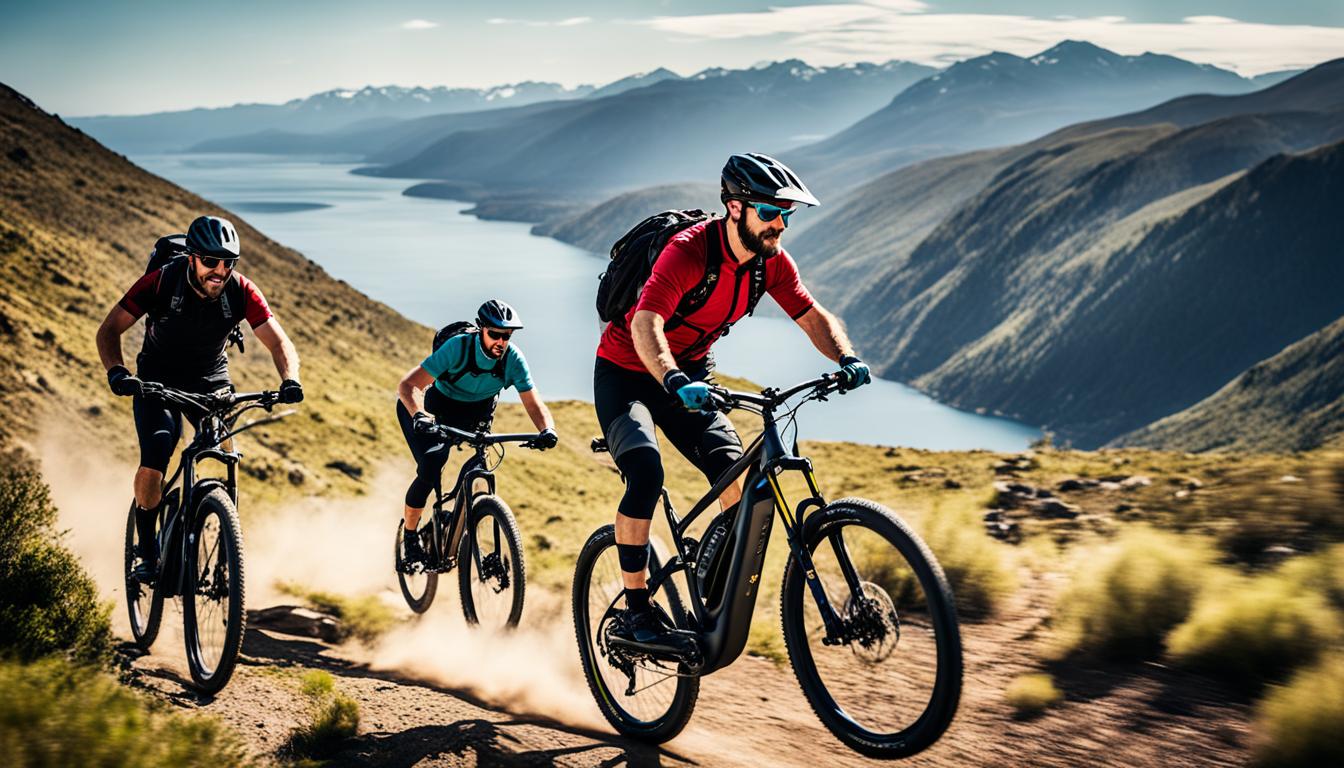Are you ready for an adventure? Bike touring offers a unique way to explore the world on two wheels. But before you hit the road, there are some important things to know as a beginner. In this comprehensive guide, we’ll provide you with all the essential information you need to plan and prepare for your first bike tour.
Key Takeaways
- Bike touring is a thrilling and rewarding experience for adventurers of all levels.
- Proper planning is essential for a successful tour.
- Choosing the right bike and gear can make or break your tour.
- Safety and etiquette should always be top priorities.
- Overcoming challenges is part of the adventure.
Why Choose Bike Touring?
If you’re looking for a new way to explore the world, bike touring might be just what you’re looking for. Bike touring combines adventure, fitness, and the freedom of being on two wheels. Whether you’re a seasoned cyclist or a beginner, bike touring offers a unique experience that cannot be matched by other forms of travel.
One of the biggest advantages of bike touring is the opportunity to immerse yourself in the local culture and scenery. On a bike tour, you have the flexibility to create your own itinerary and explore off-the-beaten-path destinations. Plus, you’ll get a chance to meet locals and experience their way of life.
Disclosure: When you buy through links on our site, we may earn an affiliate commission.
Bike touring is also an eco-friendly option, making it a great choice for those who want to reduce their carbon footprint. By traveling on your own power, you’ll be able to see and appreciate the natural world around you in a way that’s simply not possible on a car or bus tour.
Finally, bike touring is an excellent way to stay active and healthy while on vacation. You’ll get plenty of exercise while enjoying the scenic views and fresh air. It’s a great opportunity to challenge yourself physically and mentally, and the sense of accomplishment that comes with completing a tour can be truly exhilarating.
So, whether you’re a beginner or an experienced cyclist, bike touring is a fantastic option for your next adventure. In the next section, we’ll walk you through the essential steps of planning your first bike tour.
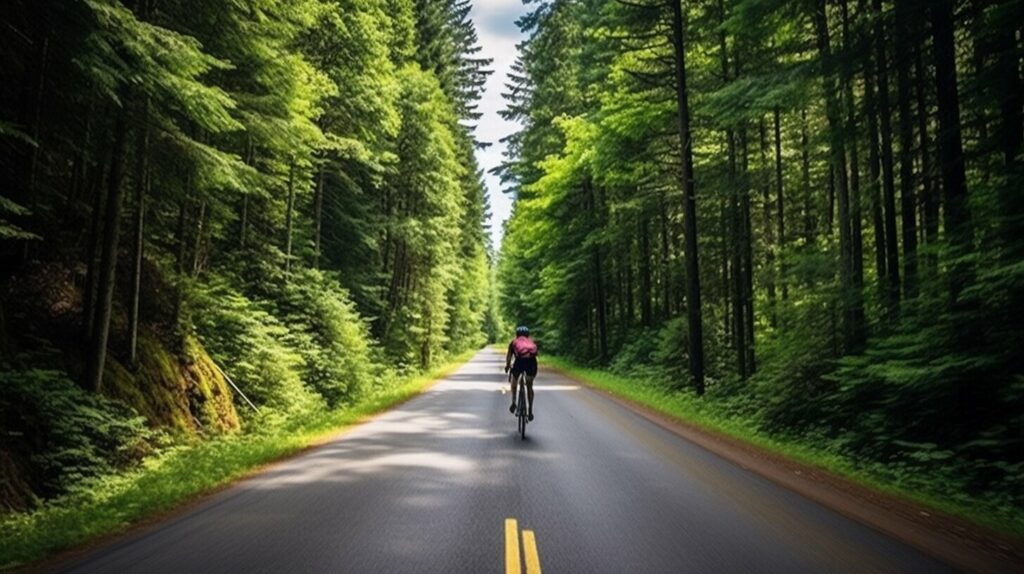
Planning Your Adventure
Proper planning is essential for a successful bike tour. Whether you’re planning a weekend getaway or a cross-country adventure, taking the time to plan your route, accommodation, and gear can make all the difference. Here are some steps to help you plan your bike tour:
- Choose your route: Determine the distance and terrain you want to cover, and research the best bike routes in your desired area. Consider factors such as road conditions, traffic, and scenery.
- Set your daily mileage: Decide how far you want to bike each day, keeping in mind your physical fitness level and the pace you want to maintain.
- Consider accommodation: Research and book accommodation along your route in advance, whether it’s campsites, hostels, or hotels. Make sure you have a place to stay each night.
- Prepare your gear: Ensure you have all the necessary gear for your tour, including a suitable bike, clothing, tools, camping equipment, and safety gear.
- Plan your meals: Consider where you’ll eat during your tour. Whether you pack your own food or plan to eat at restaurants, ensure you have enough fuel to keep you going.
Following these steps will help you plan a successful and enjoyable bike tour. However, remember to also stay flexible and adaptable during your trip, as unexpected events or changes may arise. Happy planning!
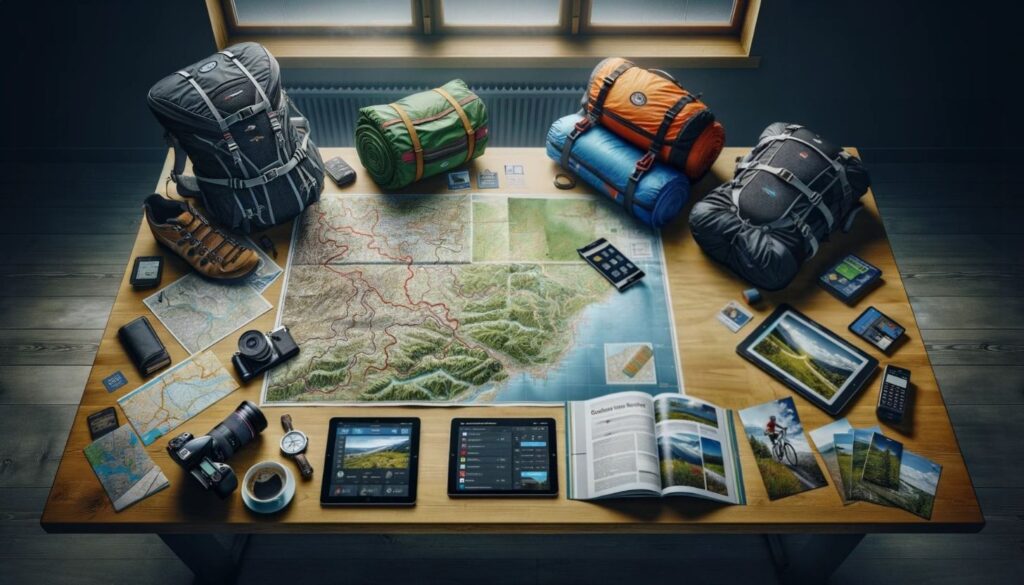
Selecting the Perfect Bike
Choosing the right bike is crucial for a successful bike touring experience. When selecting a bike, there are three things to consider: frame material, components, and tire size. For beginners, a touring bike is the best option. The touring bike is designed to carry heavy loads over long distances, making it perfect for bike touring.
Touring bikes have a sturdy frame made of steel or aluminum. The frame is designed to handle the weight of the rider and the gear. Additionally, touring bikes have a comfortable saddle and handlebars that allow the rider to sit in an upright position, reducing strain on the back and neck.

When it comes to components, look for a bike with a wide range of gears. Bike touring involves climbing steep hills and riding long distances, so having a wide range of gears will make your journey more comfortable. Disc brakes are another important component to consider. They offer better braking performance and are more durable than traditional rim brakes.
Finally, tire size is crucial when it comes to bike touring. Wider tires provide more stability and cushioning, making them perfect for long rides. Look for a bike with tires that are at least 28mm wide.
In summary, when choosing the right bike for bike touring, opt for a touring bike with a sturdy frame, a wide range of gears, disc brakes, and wide tires for stability and comfort.
Essential Gear for Bike Touring
When embarking on a bike tour, it’s important to have the right gear to ensure a smooth and enjoyable experience. Here’s a checklist of essentials for bike touring:
- Bike: Choose a bike suitable for touring, such as a touring bike, hybrid bike or a mountain bike. Ensure it’s in good condition with properly inflated tires, working brakes, and gears.
- Panniers: You’ll need to carry your belongings on your bike, so invest in quality panniers that attach to your bike’s rear rack.
- Saddlebag: For additional storage, consider adding a saddlebag to your bike’s rear or under the seat.
- Camping gear: If you plan to camp during your tour, pack a tent, sleeping bag and sleeping pad.
- Clothing: Pack comfortable cycling shorts, a few jerseys, waterproof jacket, cycling shoes, and gloves. Also, bring a change of clothes for off-bike activities.
- Repair kit: Bring a basic repair kit with tire levers, spare tubes, patch kit, pump, and multitool.
- First aid kit: Accidents can happen, so it’s important to have a small first aid kit with bandages, antiseptic, pain relievers, and any prescription medications.
- Navigation: Carry a map or GPS device to help plan your route and stay on track.
- Water and snacks: Stay hydrated by carrying enough water, and bring energy bars or other snacks to fuel your ride.
Remember to distribute the weight evenly throughout your panniers and saddlebag, and pack sensibly to avoid overloading your bike. Happy touring!
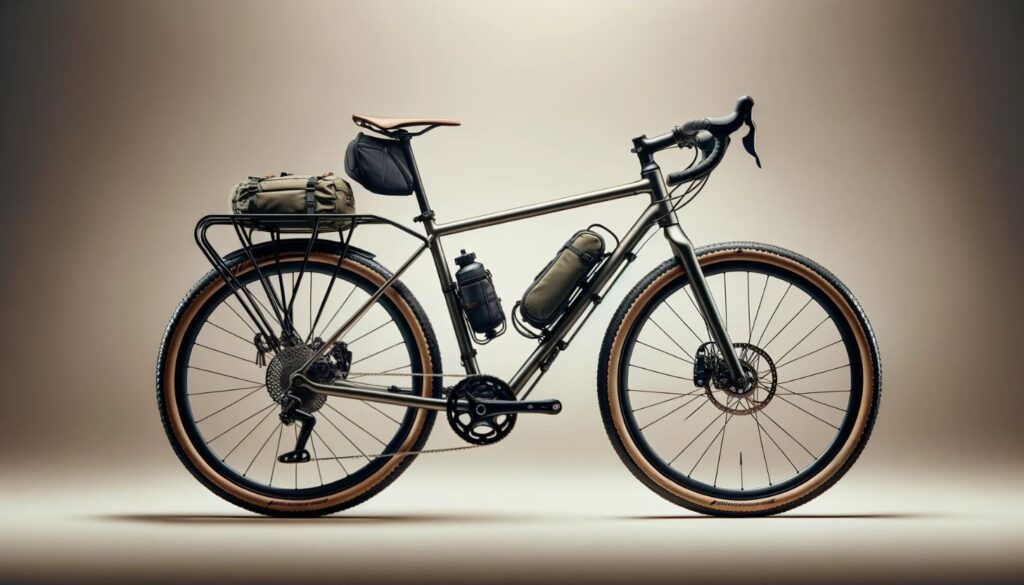
Packing for Bike Tour Success
Proper packing is essential for a successful bike tour. Here’s a comprehensive checklist of items to bring with you:
- Clothing essentials: lightweight, moisture-wicking cycling shorts, jerseys, socks, and gloves, as well as a waterproof jacket and pants for rainy weather.
- Cycling accessories: a helmet, sunglasses, and cycling shoes or sneakers.
- Tools: a bike multi-tool, tire levers, bike pump, spare tubes, and a patch kit.
- Camping gear: a lightweight tent, sleeping bag, sleeping pad, and camp stove with fuel.
- Personal hygiene items: toothbrush, toothpaste, sunscreen, insect repellent, and any necessary medications.
- Emergency kit: a first aid kit, whistle, and headlamp with extra batteries.
- Food and water: energy bars, electrolyte drinks, and plenty of water.
Be mindful of the weight of your gear, as it can affect your riding performance and fatigue levels. Pack only what’s necessary and consider investing in lightweight, compact gear.
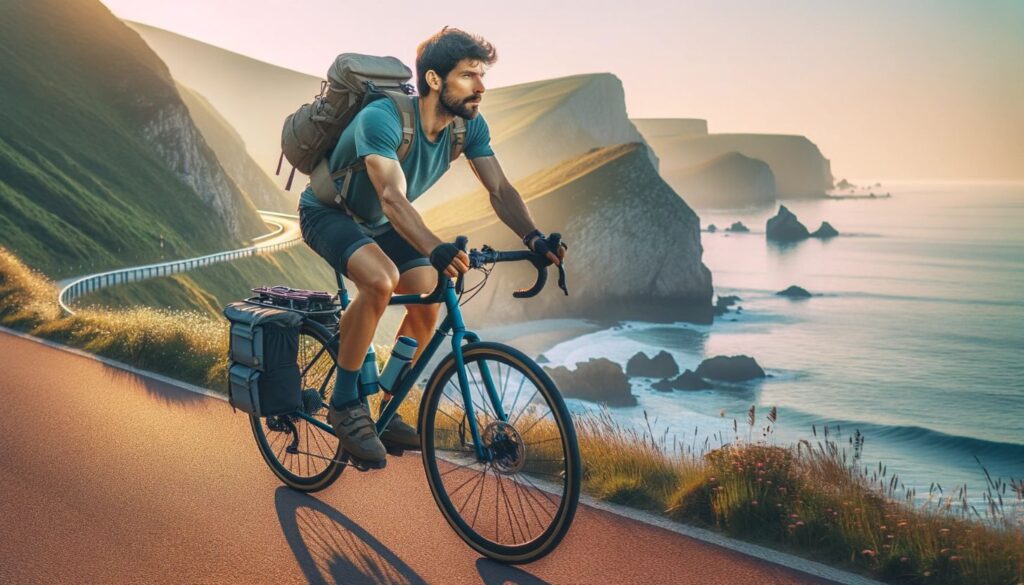
Bike Touring Routes
Embarking on a bike tour is an excellent way to immerse yourself in the natural beauty and cultural richness of the world. Here are some of the most popular bike touring routes for beginners:
| Route | Description |
|---|---|
| Pacific Coast Route | This stunning route runs from Canada to Mexico along the Pacific coast, offering breathtaking views of the ocean and plenty of campsites along the way. |
| Erie Canal Route | This flat, scenic route follows the historic Erie Canal from Buffalo to Albany and is perfect for beginners. |
| Great Allegheny Passage/C&O Canal Trail | This mixed-terrain route takes you from Pittsburgh to Washington D.C. through stunning national parks and charming towns. |
| TransAmerica Trail | This legendary route takes you from coast to coast, passing through the mountains, prairies, and deserts of the United States. |
These routes offer a range of terrains and scenery, making them suitable for a variety of skill levels. Whichever route you choose, remember to pack appropriately, including plenty of water and snacks to fuel your adventure.
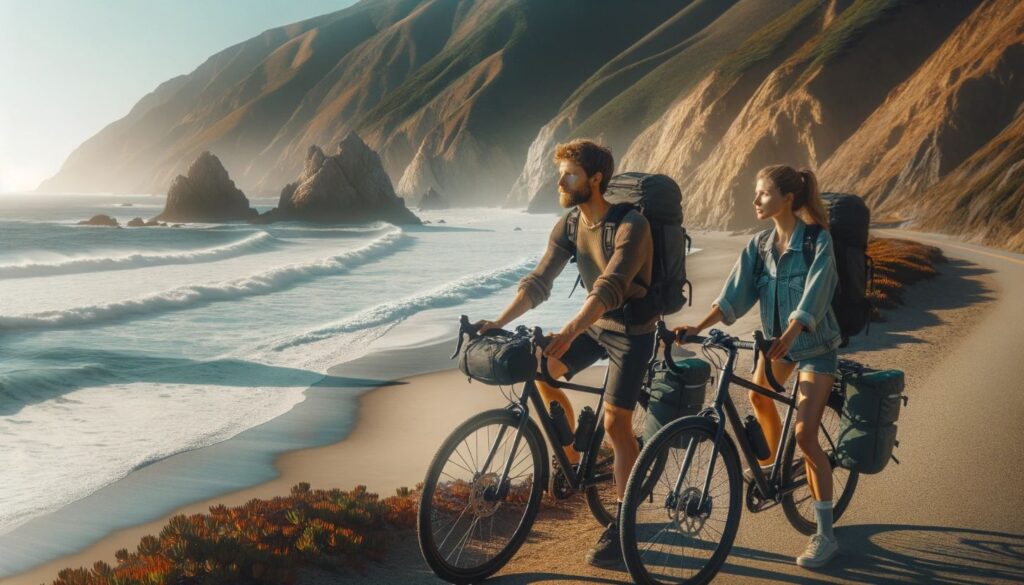
Tip: Before setting out on a bike tour, it’s a good idea to research the route and plan your stops along the way. Consider factors such as distance, elevation, and available amenities such as campsites, restaurants, and bike shops.
Safety Tips for Bike Touring
As a beginner, safety should be your top priority when embarking on a bike tour. Here are some essential safety tips to keep in mind:
- Always wear a helmet: Wearing a properly fitting helmet is the best way to protect your head in case of an accident.
- Be visible: Choose brightly colored clothing and use lights and reflectors to make yourself visible to other motorists.
- Obey traffic laws: Follow the same rules of the road as motorists, including stopping at stop signs and red lights and riding in the same direction as traffic.
- Stay alert: Keep your eyes and ears open for potential hazards, such as road debris, animals, and other cyclists or motorists.
- Stay hydrated: Dehydration can lead to fatigue and impair your judgement, so be sure to drink plenty of fluids throughout your tour.
By following these safety tips, you can enjoy a safe and enjoyable bike touring experience.
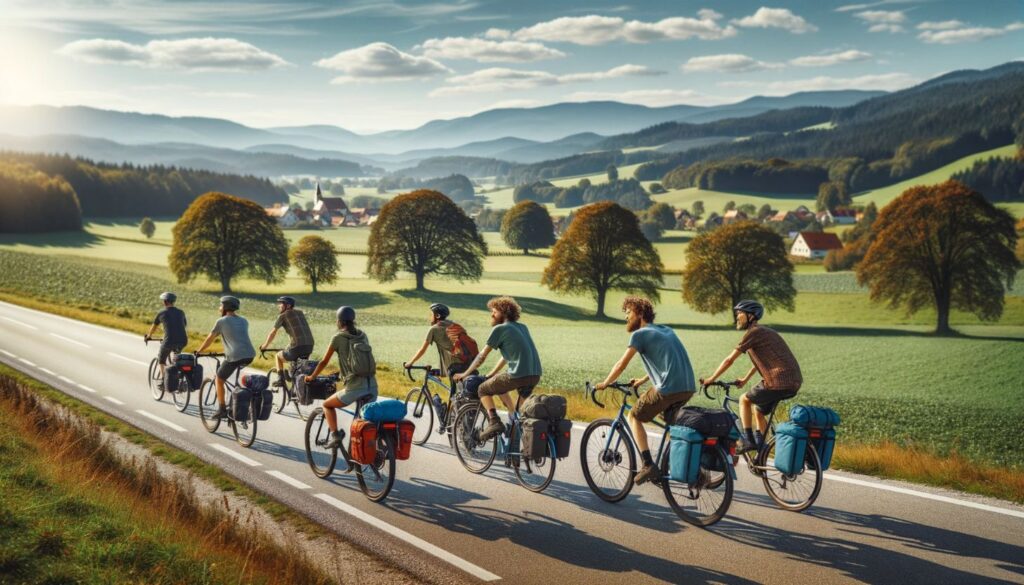
Nutrition and Hydration Essentials
Proper nutrition and hydration are essential for staying energized and healthy during your bike tour. Long days on the road can take a toll on your body, so it’s important to fuel up with the right foods and fluids.
Eating on the Road
When it comes to food, pack plenty of snacks that are high in protein and carbohydrates, such as energy bars, nuts, and dried fruits. These foods offer a quick and easy source of energy to keep you going throughout the day.
For your main meals, try to eat a balanced diet consisting of lean protein, whole grains, and plenty of fruits and vegetables. Consider packing a small stove to cook your meals, or plan to stop at local restaurants or grocery stores along the way.
Hydration Tips
Staying hydrated is equally important for maintaining your energy levels and avoiding the risk of dehydration. Pack plenty of water bottles and refill them whenever possible.
Consider using electrolyte supplements to replace lost minerals and salts if you’re sweating heavily. These can help you avoid cramps, headaches, and fatigue.
Drink water often, even if you’re not feeling thirsty. It’s easy to become dehydrated without realizing it, so make a conscious effort to drink water regularly throughout the day.
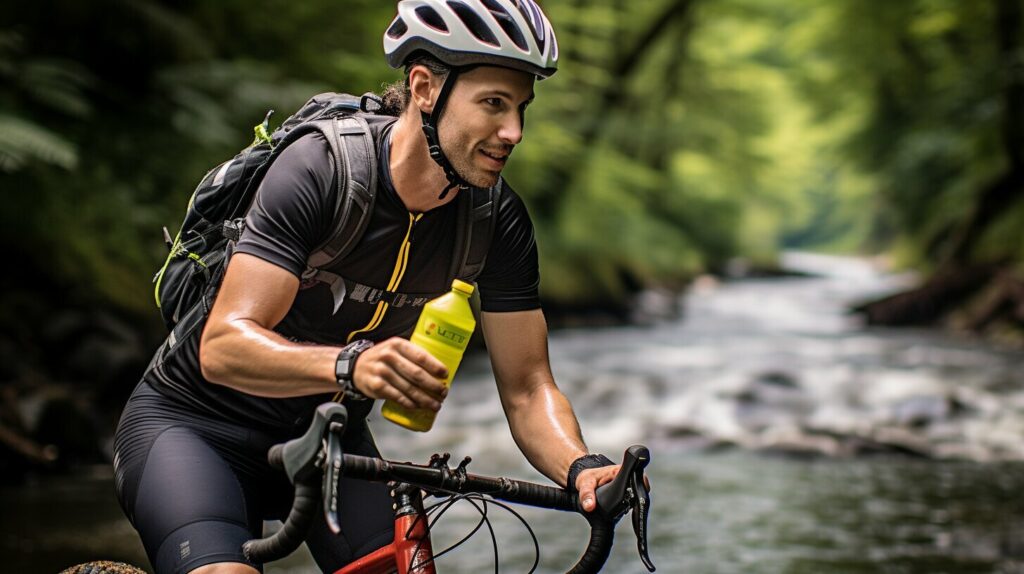
Remember that nutrition and hydration both play a critical role in your bike touring experience. Be sure to pack plenty of healthy snacks, stay hydrated, and fuel your body with nutritious meals to ensure an enjoyable and successful journey.
Bike Touring Etiquette
As a beginner in bike touring, it’s important to be mindful of some basic bike touring etiquette to have a positive experience on the road. These tips will help you be a considerate cyclist:
- Stay to the right: Always keep to the right side of the road when cycling, especially when there is no bike lane or shoulder.
- Pass safely: When passing other cyclists or vehicles, give ample space and signal your intention with a bell or by calling out.
- Be visible: Wear bright, reflective clothing and use lights and reflectors to ensure you are visible to other road users.
- Respect the environment: Leave no trace and keep the natural environment clean and undisturbed.
- Be polite: Remember to say thank you and wave to drivers who give you space on the road.
By following these simple guidelines, you can have a safe and enjoyable bike touring experience while respecting other road users and the environment.

Conquering Challenges
As a beginner on a bike tour, you may face some challenges that could impact your experience. However, with the right preparation and mindset, you can overcome these obstacles and have a successful tour. Here are some common challenges you may encounter and how to overcome them:
- Mechanical Issues: One of the most common challenges on a bike tour is encountering mechanical issues with your bike. To avoid this, make sure you have your bike serviced before your tour and carry essential repair tools and spare parts. If you do face a mechanical issue, try to resolve it yourself using your tools. If you’re unable to fix it, seek help from a local bike shop or other cyclists.
- Inclement Weather: Bad weather can make your bike tour challenging and uncomfortable. To prepare for this, pack appropriate clothing and gear for varying weather conditions, and check the forecast regularly. If you do encounter bad weather, take breaks as needed and seek shelter if necessary.
- Fatigue: Long days of cycling can lead to fatigue, which can impact your mood and motivation. To avoid this, plan rest days into your tour and break up your cycling into manageable chunks. Make sure to fuel your body with nutritious food and stay hydrated. When you feel tired, take a break and enjoy the scenery around you.
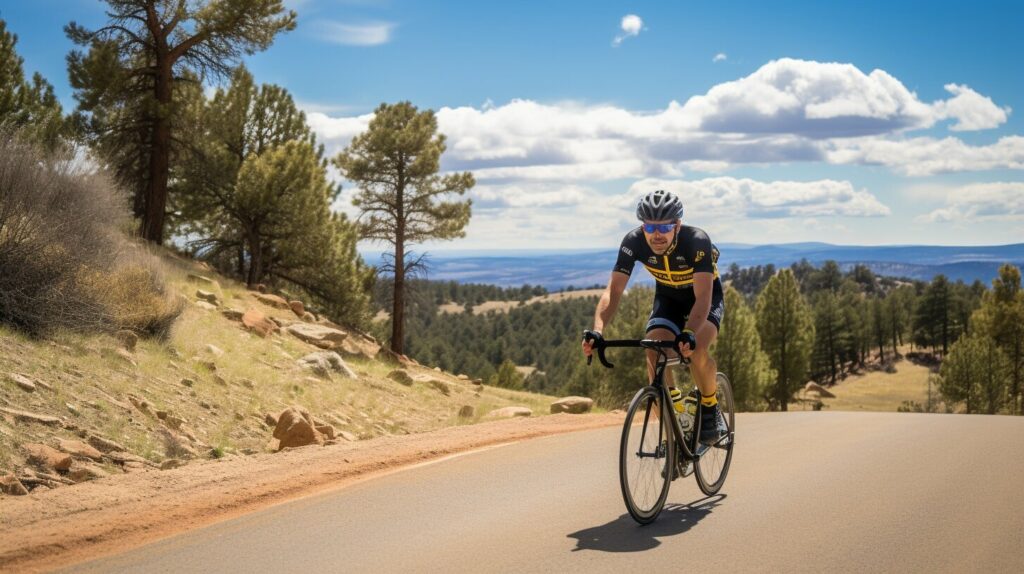
By anticipating and preparing for these challenges, you’ll be able to enjoy your bike tour to the fullest.
Conclusion
In this comprehensive guide, we’ve covered all the essential aspects of bike touring for beginners. From the benefits of bike touring to planning your adventure, selecting the right bike and gear, safety tips, nutrition and hydration essentials, bike touring etiquette, and how to overcome challenges, you now have a solid foundation to start your journey.
Bike touring offers a unique and fulfilling way to explore the world, immerse yourself in nature and culture, and challenge your physical and mental limits. Whether you’re planning a short weekend getaway or a cross-country expedition, the key takeaways from this guide will help you make the most of your bike touring experience.
Remember, proper planning, preparation, and a positive mindset are your allies on the road. Safety should always be a priority, and taking care of your nutrition and hydration needs will keep you energized throughout your journey. By following bike touring etiquette and staying adaptable in the face of challenges, you’ll create lasting memories and gain a sense of accomplishment.
So, pack your bags, check your bike, and set out on your bike touring adventure with confidence. The open road awaits, and with the right knowledge and mindset, you’re well-equipped to enjoy every moment of your ride. Happy touring!
FAQ
What is bike touring?
Bike touring is a form of traveling where you use a bicycle as your main mode of transportation to explore different destinations. It allows you to immerse yourself in the journey, enjoy the scenery, and experience the freedom of the open road.
Is bike touring suitable for beginners?
Yes, bike touring is suitable for beginners! It’s a fantastic way to challenge yourself, improve your fitness, and discover new places. With proper planning and preparation, even beginners can have a successful and enjoyable bike touring experience.
How do I plan a bike tour?
Planning a bike tour involves several steps. First, determine your route and decide on the distance you want to cover each day. Research accommodation options and make reservations if necessary. Make sure to pack all the essential gear and plan for meals and water stops along the way.
What type of bike should I use for bike touring?
When choosing a bike for touring, consider a sturdy and reliable option such as a touring bike, gravel bike, or mountain bike. These bikes are designed to handle the demands of long-distance travel and carry your gear comfortably.
What gear do I need for bike touring?
Some essential gear for bike touring includes a helmet, bike repair tools, a tent or camping hammock, sleeping bag, cooking equipment, clothing suitable for various weather conditions, and navigation tools such as maps or a GPS device. It’s important to pack efficiently and prioritize lightweight and multi-purpose items.
What should I pack for a bike tour?
Along with the gear mentioned earlier, it’s important to pack clothing suitable for various weather conditions, personal hygiene items, first aid supplies, extra bike tubes, a water bottle, and snacks for energy during the ride. Don’t forget to bring your identification and any necessary travel documents.
Are there specific bike touring routes I should consider?
Yes, there are many popular bike touring routes to choose from. Some well-known ones include the Pacific Coast Highway in California, the Great Divide Mountain Bike Route, and the EuroVelo network in Europe. Research different routes based on your preferences and the level of challenge you desire.
What are some safety tips for bike touring?
Safety should always be a priority when bike touring. Wear a helmet, obey traffic laws, and use proper signaling. Stay visible by wearing bright-colored clothing or reflective gear. Be mindful of road conditions and traffic, and always carry basic bike repair tools and a first aid kit.
How can I ensure proper nutrition and hydration during a bike tour?
It’s important to fuel your body with nutritious food and stay hydrated during a bike tour. Pack lightweight, energy-dense snacks such as nuts, dried fruits, and energy bars. Carry a reusable water bottle and refill it whenever possible. Plan your meals and water stops strategically to ensure you have enough sustenance throughout the day.
What is bike touring etiquette?
Bike touring etiquette involves being considerate and respectful to others on the road. Yield to pedestrians, give ample space to other cyclists when passing, and obey all traffic laws. Leave no trace by properly disposing of waste and minimizing your impact on the environment.
How can I overcome challenges during a bike tour?
Bike touring can present challenges such as mechanical issues, adverse weather conditions, and fatigue. Carry basic bike repair tools and learn some simple maintenance skills. Check weather forecasts ahead of time and plan accordingly. Pace yourself and listen to your body, taking rest days if needed. Remember that overcoming challenges is part of the adventure.

